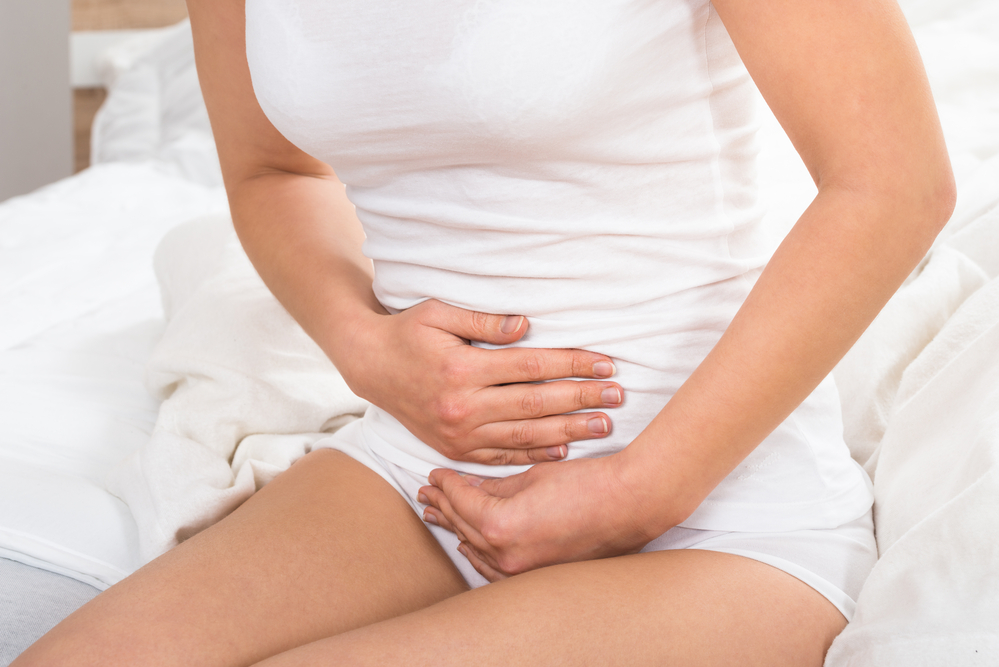
How Might Bladder Health Affect Sexual Health?

Bladder health is an important component of one’s overall well-being, and one that may have ramifications for a person’s sexual health. There are several ailments that can affect the bladder, ranging from acute (short-term) infections to chronic (long-term) conditions. Though these conditions can occur in both men and women, they are more common in women because of the anatomy of their urethra: it is shorter compared to the male urethra and it is located closer to the anus. Other risk factors include pregnancy, childbirth, and hormonal changes due to menopause.
The following is a list of some of the most common bladder conditions with an explanation of how they could interact with a person’s sexual health.
Urinary Tract Infection (UTI)
When a UTI affects the bladder and creates local inflammation, it is known as cystitis. A person may develop a UTI for a number of reasons. One potential cause is improper hygiene that allows bacteria from the gastrointestinal tract to travel to and infect the urinary system. Hormonal changes (menopause or certain birth control methods) may make it easier for harmful bacteria to travel to the urinary tract by changing the vaginal flora and pH. In some women, UTIs are associated with sexual intercourse. This may contribute to anxiety around sexual activity and possibly even avoidance of sex.
Women who struggle with frequent UTIs (3 or more per year, or 2 within 6 months) should see a urologist to discuss methods of UTI prevention. Some methods include drinking more water, taking cranberry supplements, regularly using vaginal estrogen, taking oral antiseptics, and taking antibiotics at the time of intercourse or daily, depending on the frequency and severity of the infections.
It is important to always have your urine tested for UTI before starting antibiotics because other conditions may present in a similar way.
Overactive Bladder (OAB)
OAB is a condition characterized by urinary urgency (a strong, sudden need to urinate), frequent urination (urinating many times throughout the day), and nocturia (waking up to urinate more than once at night). Individuals with OAB may also experience urinary incontinence, which is leaking urine.
This condition can affect a person’s sexual health in several ways. Research has indicated that some individuals with OAB experience pain or discomfort during sexual intercourse. Others fear experiencing incontinence during sex, which can contribute to self-consciousness and sex-related anxiety. People with OAB may need to stop sexual activity in order to urinate, which they might find frustrating and/or embarrassing. Working with a health care provider to manage OAB symptoms through monitoring fluid intake, bladder training, and/or medications may help to address these issues.
Interstitial Cystitis (IC)
IC is a chronic bladder pain condition that lasts for at least six weeks and is not caused by an infection or any other easily identifiable causes. Its symptoms include bladder pain, pelvic pain, frequent urination, reduced bladder capacity, and pain during sexual intercourse. The cause of IC is currently unknown, but a prevalent theory is that IC is related to an issue of the bladder lining that leaves it vulnerable to irritation.
While more common in women, both men and women can have IC and may experience sexual problems because of it. For women, the proximity of the bladder to the vagina may make sex painful, particularly during deep penetration. Men may experience painful orgasms or have increased bladder pain the day following sexual intercourse.
Currently, there is no known cure for IC. However, its symptoms can be managed with lifestyle and diet modifications, pelvic floor therapy, oral and local medications, and bladder instillations (washes). Keeping IC in remission is the best way to prevent pain associated with intercourse.
Resources:
- Anger, J., Lee, U., Ackerman, A.L., Chou, R., Chughtai, B., Clemens, J.Q., Hickling, D., Kapoor, A., Kenton, K.S., Kaufman, M.R., Rondanina, M.A., Stapleton, A., Stothers, L., Chai, T.C. (2019). Recurrent Uncomplicated Urinary Tract Infections in Women: AUA/CUA/SUFU Guideline. American Urological Association. https://www.auanet.org/guidelines/guidelines/recurrent-uti
- Coyne, K.S., Margolis, M.K., Jumadilova, Z., Bavendam, T., Mueller, E., & Rogers, R. (2007). ORIGINAL RESEARCH—OUTCOMES ASSESSMENT: Overactive Bladder and Women's Sexual Health: What is the Impact? The Journal of Sexual Medicine, 4(3), 656-666. DOI: https://doi.org/10.1111/j.1743-6109.2007.00493.x
- Hanno, P.M., Erickson, D., Moldwin, R., Faraday, M.M. (2015). American Urological Association Diagnosis and treatment of interstitial cystitis/bladder pain syndrome: AUA guideline amendment. J Urol. 193(5), 1545-53. DOI: 10.1016/j.juro.2015.01.086
- International Urogynecological Association. (2021). Interstitial Cystitis. https://www.yourpelvicfloor.org/conditions/interstitial-cystitis/
- International Urogynecological Association. (2021). Overactive Bladder. https://www.yourpelvicfloor.org/conditions/overactive-bladder/
- International Urogynecological Association. (2021). Urinary Tract Infection. https://www.yourpelvicfloor.org/conditions/urinary-tract-infection/
- Urology Care Foundation. (2021). What is Interstitial Cystitis (IC)/Bladder Pain Syndrome? https://www.urologyhealth.org/urology-a-z/i/interstitial-cystitis




